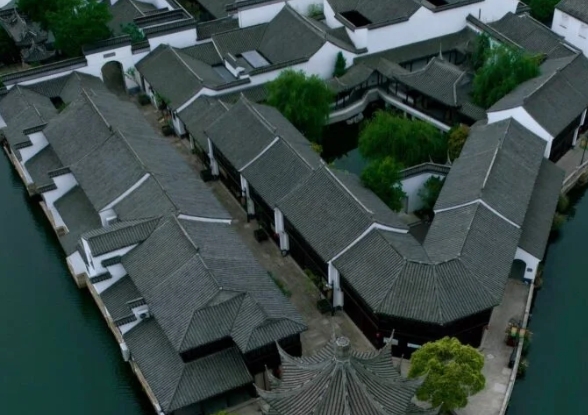One is the Minglian area in Huanggu District, and the other is the Xi Ta (West Tower) area in Heping District. Compared to the tranquility of Minglian, Xi Ta is exceptionally bustling.

In the early 19th century, with a large influx of Korean people settling in Xi Ta, this area gradually became a Korean ethnic settlement. In 1899, the first train station in Shenyang, “Maogudun,” was built, located 200 meters west of Yanshou Temple. This train station effectively promoted the economic development of the Xi Ta area.
From 1901 onwards, Korean immigrants began to settle here, gradually taking shape as the early form of Xi Ta Street. Starting from the 1930s, more and more Korean people sought livelihoods and properties in Shenyang, continuing to live and multiply in the Xi Ta area, gradually forming a concentrated Korean ethnic area.
After the reform and opening up, in 1987, the Xi Ta area underwent a shantytown renovation, attracting a large number of Korean businessmen to invest and start businesses. In 1991, the first restaurant invested in by Koreans, “Silla Town,” opened, and the Xi Ta area also welcomed a construction boom.
In 1992, following the establishment of diplomatic relations between China and South Korea, a large number of South Korean foreign-funded enterprises and technical personnel settled in Shenyang. Xi Ta’s Yanbian Street also successively opened a number of restaurants and entertainment facilities, gradually forming the well-known “Korean Ethnic Folklore Feature Street.”
Today, Xi Ta, with a history of 120 years, has become a gourmet checkpoint in the Northeast region, integrating the essence of Korean ethnic culture. Xi Ta Commercial Street has a long history of over 120 years, nurturing a unique Korean ethnic cultural charm.
Currently, there are nearly two thousand enterprises and individual households in the Xi Ta district, including 352 catering businesses, 1003 trade businesses, 120 cultural businesses, over 200 fashion clothing stores, and 25 entertainment venues. During the day, Xi Ta Street is bustling with people, and at night, neon lights flicker. The streets are lined with Korean-style architecture, restaurants, and entertainment venues, presenting a vibrant scene of shopping, gourmet food, and fashion, forming a commercial spatial layout with “one alley,” “two shops,” “three streets,” and “five roads” as the framework.
The Xi Ta area is particularly prominent in the development of the catering industry, with 354 food merchants in the area rated over three and a half stars, and more than 60 food merchants operating for more than 24 hours, which are highly favored by local Shenyang residents and tourists from other places, becoming a strong representative of the prosperous development of Shenyang’s “night economy”.









